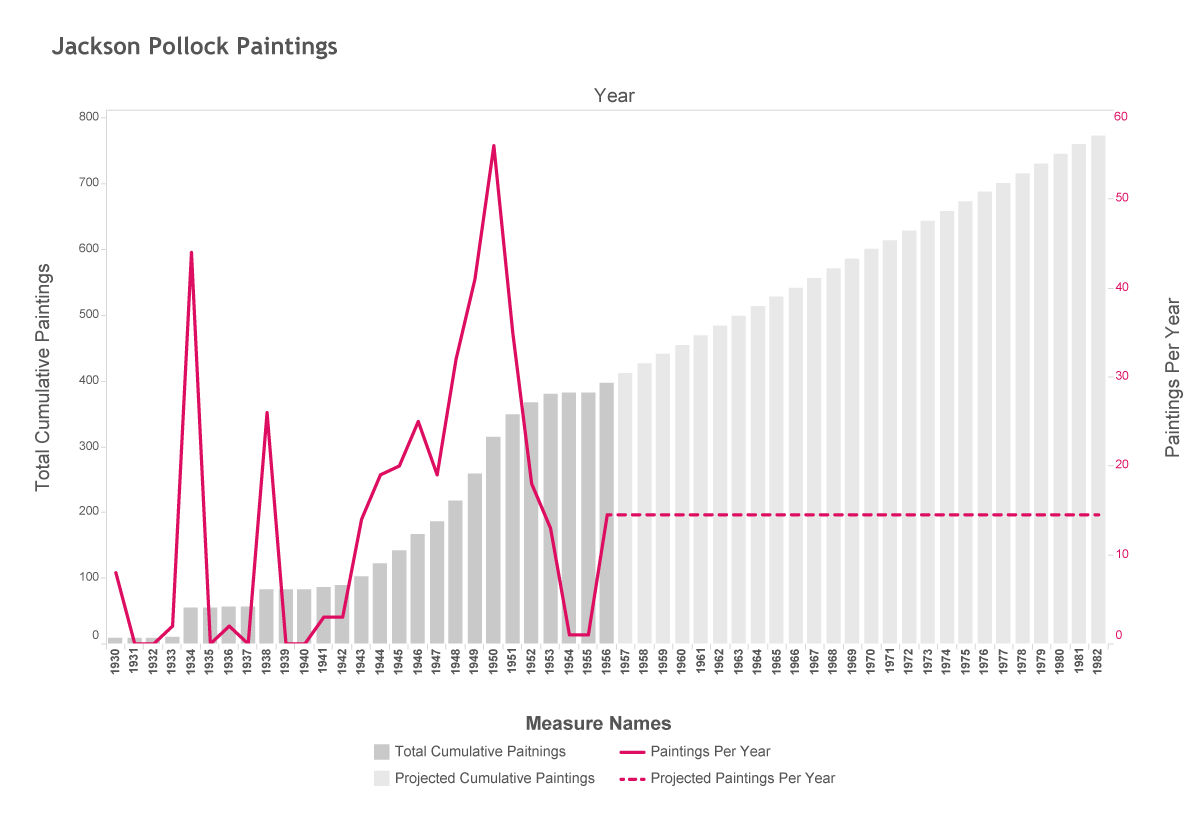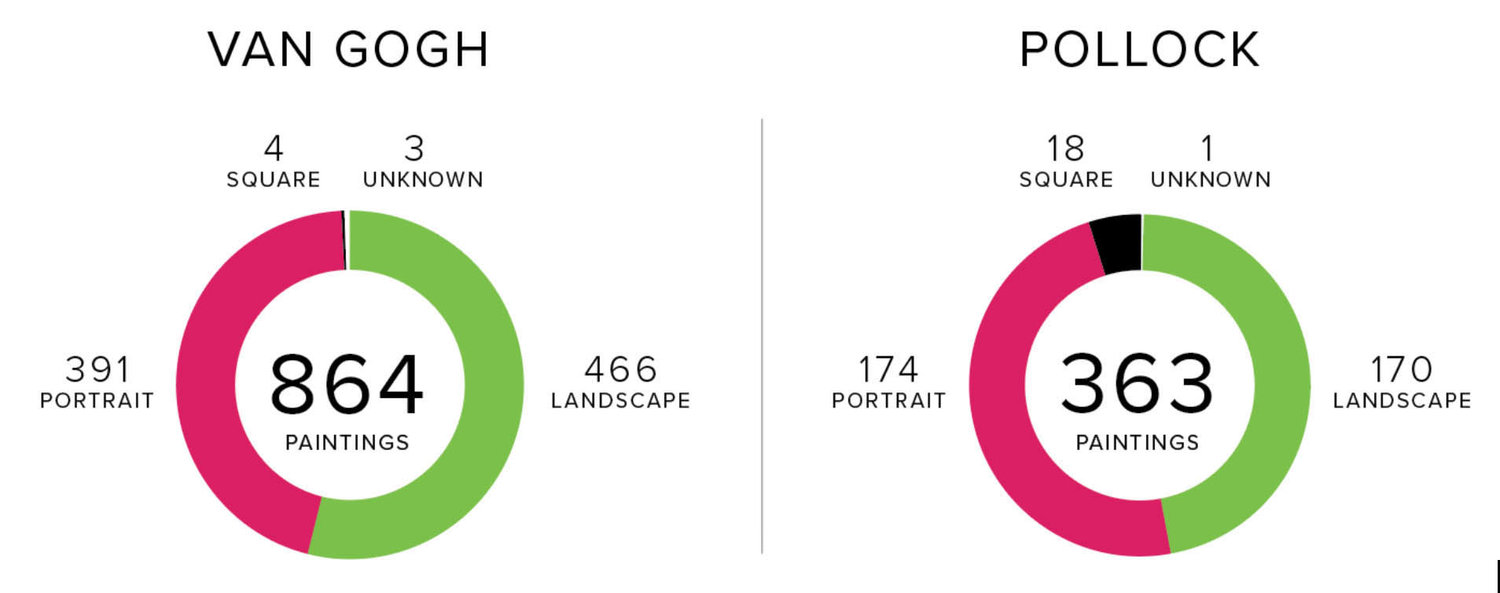Art Analytics
Artnome has the world's largest analytical database of known works across our most important artists. Think Zillow/Moneyball for art and artists. We produce original research based on this database using the latest tools from data science like machine learning and computer vision.
Heat map from our art prediction model
Inventing The Future Of Art Analytics
In this article on inventing new art analytics, we:
Outline a new approach to descriptive art analytics using Artnome’s database of artists’ completes works.
Chart a never-before seen view of Georgia O’Keeffe’s full body of work.
Share Artnome’s data scientist Kyle Waters’ early approach to predictive analytics using a random forest machine learning model.
Make predictions on four works from the Ebsworth collection going to auction this week.
Share artists’ price history, performance, and comps provided by our good friends at MutualArt.
No. 18, Mark Rothko, 1946, oil on canvas, 155 x 110 cm
Quantifying Mark Rothko
Yesterday was Mark Rothko’s birthday, and I wanted to celebrate by sharing some stats from the Artnome database on one of my favorite artists.
Born on September 26th, 1903, Mark Rothko would be 115 years old today. Though he tragically cut his own life short at the age of 63, Rothko left us 836 known paintings that were created over a 46-year span. This translates to roughly 18 paintings a year, more than one per month. Of course, no artists’ production is a constant; there are fat years and lean years of production.
Plotting abstraction in Mondrian over his career
Quantifying Abstraction In Art: Mondrian
While not sufficient for measuring all abstraction, we felt like simplicity may be a reasonable surrogate for measuring abstraction in the work of Mondrian. By simplicity, we mean the reduction of the color palette and the presence of fewer and fewer lines. Alexander was able to capture these trends by creating a complexity score.
Machine Learning For Art Valuation. An Interview With Ahmed Hosny.
I sat down with Ahmed over pizza to talk about his project “The Green Canvas” which explores art valuation analytics using machine learning and linear regression. According to Ahmed:
“We were interested in quantifying aesthetics as an extremely subjective and quality-based feature as well as exploring the middle realm between artistic evaluation and scientific statistics. How do we evaluate paintings? Will there be any interesting relationships between price evaluation and pixels?”
Art And Death. How Many Paintings Could Jackson Pollock Have Made?
Pollock painted a total of 363 paintings in his short 44 years of life. The circumstances around his death were tragic. How many paintings he would have left this world with had he been able to get help with his struggle with alcohol and depression and lived a full life?
In U.S. Public Statues Of Confederate Soldiers Nearly Double Those Of Women
Women make up ~50% of humans. Estimates put the population for all people who ever lived on earth at 108B. So that means we have about 54B+ woman to potentially honor with public statues. Fifty-three billion women is a heck of a lot more than 1M Confederate soldiers, and most of these women were not in a losing war to preserve slavery. So, then, there must be lots of public statues celebrating women, right? Not so much.
Can I Use Data To Beat Christie's Auction Estimates?
The appraisers at Christie's likely have direct access to the painting, the documentation associated with it, control over the promotion leading up the auction, and 241 years of experience appraising and selling art. I have none of those things, but I do have a one-of-a-kind analytical art database. So I decided to build on the techniques I used to win 2nd place in the first fantasy art auction to see if I could create a more accurate appraisal than the experts at Christie's.
Moneyball For Art (And Pollock's Tallest Painting)
I have a vision where we use quantitative language to describe artworks in the same way as in business and sports. By combining information from catalogues raisonnés, auctions, and exhibitions, we can tap into new cultural context and build sophisticated market intelligence for art. With a complete view of an artist's work, we are able to create sports-style statistics highlighting the elements that make artists and their work unique.
How I Finished 2nd In The First For Profit Fantasy Art Auction
How well would you do in predicting the sale price of artworks in a high-stakes auction like Sotheby's or Phillips where a single painting can sell for more than one hundred million dollars? Last week I found out for myself when I finished second in Art Market Monitor's first cash entry fantasy contest. This is the first paid fantasy art auction that I am aware of, so I thought others might find the strategy I used to finish in second place interesting.









